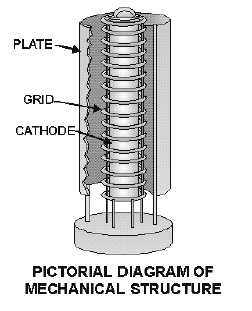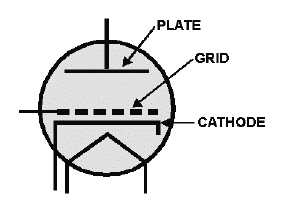2-12
placed over the grid. The result is a tube composed of concentric cylinders like the one shown in figure
2-11. Thus, the name concentric tubes.
Figure 2-11.—Concentric construction of a conventional tube.
At ultrahigh frequencies, the problems of producing small tube elements while reducing the spacing
between elements become very difficult. Not only are the elements hard to keep parallel with each other
during the manufacturing process, but they also have a tendency to warp and sag under normal operating
conditions. Since these elements are already as close together as possible, any reduction in element
spacing can cause arcing. Therefore, a new type of tube was developed to prevent arcing or element
sagging in conventional tubes. This tube is known as the planar tube.
Planar tubes are electron tubes in which the cathode, plate, and grids are mounted parallel to each
other. Their physical construction greatly resembles a schematic diagram of a normal tube, as shown in
figure 2-12.
Figure 2-12.—Resemblance of a planar tube to a schematic diagram.





